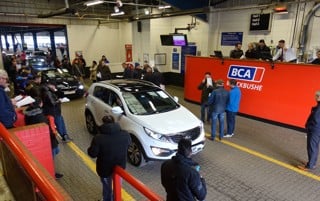But although the market is currently quiet there are a few sectors bucking the trend. Prestige cars, such as Audi, BMW, Lexus and Mercedes are particularly in demand. But they must have a service history and good spec, notably leather interior, metallic paint and alloy wheels, in order to ensure a fast and effective retail enquiry. Possibly driving this trade is the retail man abandoning run-of-the-mill marques, and going for the badge. They are purchasing what they perceive as a more up-market car one or two years older.
Another area of demand - across the board - is diesel. The new more powerful engines now available, combined with more durability, efficiency and good fuel economy, have been the factors driving the market. The value disparity between some petrol and diesel models is continuing to widen. For example, Peugeot 406 and Citroen Xantia are strong in diesel, but difficult to sell in petrol.
Although traditionally popular, the larger people carriers are now beginning to find the going tougher - regardless of fuel type. But they still must be seven-seaters. The trio of Ford Galaxy, Seat Alhambra and Volkswagen Sharan continue to dominate but immense pressure is starting to filter down. The new breed of smaller MPV now appears to be in stronger demand as these are deemed to be more usable and less van-like. Renault Scenic, Citroen Picasso and Vauxhall Zafira tend to be the most desired models.
Craig Adamson is senior editor, CAP Black Book.

















Login to comment
Comments
No comments have been made yet.